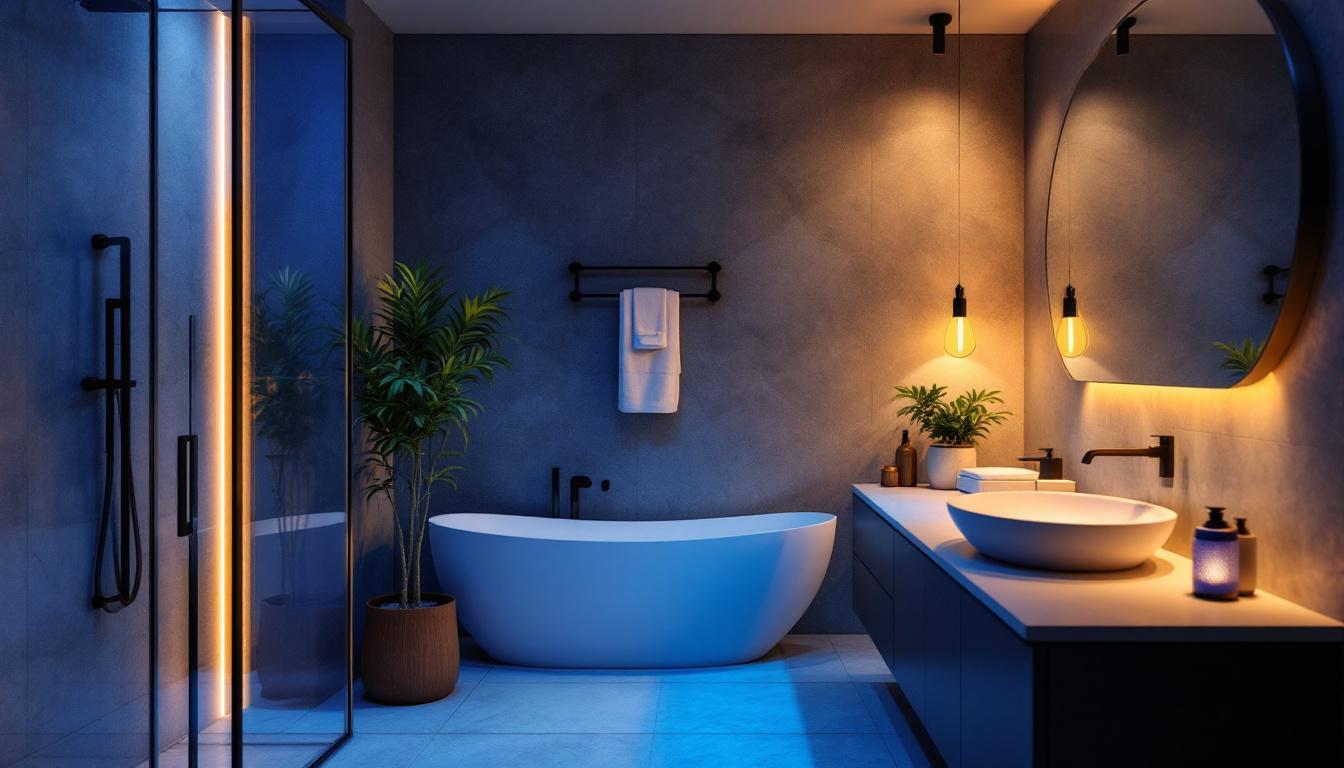
High-Intensity Discharge (HID) lamps have become a staple in the lighting industry, particularly for outdoor and industrial applications. Their ability to produce a significant amount of light with relatively low energy consumption makes them a popular choice among lighting contractors. However, to maximize the benefits and longevity of HID lamps, contractors must adhere to best practices throughout the installation and maintenance processes. This article explores essential guidelines and insights that every lighting contractor should consider when working with HID lamps.
Before diving into best practices, it is crucial to understand what HID lamps are and how they function. HID lamps produce light by creating an electric arc between two electrodes in a gas-filled chamber. This process generates a bright light that is often used in commercial, industrial, and outdoor settings. The most common types of HID lamps include metal halide, high-pressure sodium, and low-pressure sodium lamps.
Each type of HID lamp comes with its unique characteristics, advantages, and applications. Metal halide lamps are known for their excellent color rendering and are often used in retail spaces and sports facilities. High-pressure sodium lamps, on the other hand, are favored for their efficiency and long lifespan, making them ideal for street lighting and parking lots. Understanding these differences is essential for contractors to recommend the right type of lamp for specific projects. Additionally, low-pressure sodium lamps, while less common, are notable for their distinctive yellow light and are primarily used in outdoor applications where minimal color rendering is acceptable, such as in security lighting and roadways.
The primary benefits of HID lamps include their high lumen output, energy efficiency, and longevity. Compared to traditional incandescent bulbs, HID lamps can produce significantly more light per watt consumed. This efficiency translates into lower energy costs for clients and a reduced environmental impact. Furthermore, with lifespans ranging from 10,000 to 24,000 hours, HID lamps require less frequent replacements, which can save both time and money in maintenance. Beyond these practical advantages, HID lamps also contribute to enhanced safety and visibility in outdoor environments, making them a preferred choice for illuminating highways, sports fields, and large commercial areas. Their bright light can significantly improve nighttime visibility, thereby reducing the risk of accidents and enhancing security in public spaces.
Proper installation is crucial to ensuring that HID lamps operate efficiently and effectively. Following best practices during the installation phase can significantly impact the performance and lifespan of the lamps.
Selecting the appropriate fixture for HID lamps is essential. The fixture must be compatible with the specific type of HID lamp being used. Factors such as wattage, size, and design should be considered to ensure optimal performance. Additionally, the fixture should be designed to handle the heat generated by the lamp, as excessive heat can lead to premature failure. It is also important to consider the fixture’s optical design, which can influence light distribution and efficiency. Fixtures that incorporate reflectors or lenses can enhance light output and reduce wasted energy, making them a wise choice for both indoor and outdoor applications.
The mounting height of HID lamps plays a vital role in achieving the desired illumination levels. For outdoor applications, a general rule of thumb is to mount lamps at heights that allow for even light distribution while minimizing glare. In parking lots, for example, a height of 14 to 20 feet is often recommended, depending on the wattage of the lamp and the layout of the space. Furthermore, it is essential to consider the surrounding environment, including any potential obstructions such as trees or buildings, which can affect light spread. Conducting a photometric analysis prior to installation can provide valuable insights into the optimal mounting height and spacing for achieving uniform illumination across the area.
Proper wiring and ballast selection are critical components of HID lamp installation. Contractors should ensure that the wiring is rated for the appropriate voltage and current to prevent overheating and potential hazards. Additionally, using the correct ballast for the specific type of HID lamp is essential for maintaining efficiency and performance. Electronic ballasts are often preferred due to their ability to provide stable operation and energy savings. Moreover, it is advisable to follow manufacturer guidelines for installation and maintenance to ensure that the system operates within its designed parameters. Regular inspections of the wiring and ballast can help identify any issues early on, preventing costly repairs and ensuring the longevity of the lighting system.
Regular maintenance is key to prolonging the life of HID lamps and ensuring consistent performance. Lighting contractors should establish a maintenance schedule that includes routine inspections and necessary repairs. This proactive approach not only enhances the reliability of the lighting systems but also fosters a sense of trust and satisfaction among clients who rely on these installations for safety and visibility.
Conducting routine inspections allows contractors to identify potential issues before they escalate. This includes checking for signs of wear and tear, such as flickering lights, discoloration, or unusual noises. Regular inspections also provide an opportunity to clean fixtures and lenses, which can accumulate dirt and debris over time, diminishing light output. Additionally, these inspections can help in assessing the overall condition of the electrical components, ensuring that connections are secure and that there are no signs of corrosion or overheating, which could lead to more significant problems if left unaddressed.
HID lamps have a finite lifespan, and contractors should be proactive in replacing lamps before they fail completely. This not only ensures consistent illumination but also prevents potential damage to the ballast and fixture. When replacing lamps, it is advisable to replace ballasts simultaneously, especially if they are nearing the end of their lifespan. This practice can prevent future issues and maintain system efficiency. Furthermore, keeping a detailed log of lamp and ballast replacements can help contractors track performance trends and anticipate future maintenance needs, allowing for a more strategic approach to lighting management.
As technology advances, newer and more energy-efficient options for HID lamps continue to emerge. Contractors should stay informed about the latest developments in lighting technology, including LED alternatives that offer similar brightness levels with even lower energy consumption. Encouraging clients to consider these upgrades can lead to significant cost savings and improved sustainability. Moreover, many energy-efficient lighting solutions come with longer lifespans and reduced heat output, which can enhance safety in commercial and industrial environments. By presenting a comprehensive cost-benefit analysis, contractors can help clients make informed decisions that align with both their budget and environmental goals.
Safety is paramount when working with HID lamps, as they operate at high voltages and generate significant heat. Contractors must adhere to safety guidelines to protect themselves and their clients.
Wearing appropriate personal protective equipment (PPE) is essential during installation and maintenance tasks. This includes safety goggles, gloves, and hard hats to protect against potential hazards. Additionally, contractors should ensure that all team members are trained in safety protocols and aware of the risks associated with working with electrical components.
Following electrical safety protocols is crucial when working with HID lamps. This includes turning off power to the circuit before beginning any installation or maintenance work. Additionally, contractors should use insulated tools and verify that circuits are de-energized before proceeding. Regular training on electrical safety can help prevent accidents and injuries.
As awareness of environmental issues continues to grow, lighting contractors must consider the ecological impact of their work. HID lamps contain materials that can be harmful if not disposed of properly, and energy-efficient alternatives can significantly reduce carbon footprints.
HID lamps contain materials such as mercury, which can be hazardous to the environment if not disposed of correctly. Contractors should familiarize themselves with local regulations regarding the disposal of hazardous materials and ensure that old lamps are recycled or disposed of at designated facilities. Educating clients about proper disposal methods can also contribute to environmental sustainability.
Contractors have a unique opportunity to promote energy efficiency in their projects. By recommending energy-efficient lighting solutions, such as LED alternatives to HID lamps, contractors can help clients reduce energy consumption and lower utility bills. Additionally, implementing smart lighting controls can further enhance energy savings by allowing for automated adjustments based on occupancy and daylight levels.
HID lamps remain a popular choice for lighting contractors due to their efficiency and high lumen output. However, to maximize their benefits, it is essential to follow best practices throughout the installation and maintenance processes. By understanding the different types of HID lamps, adhering to installation guidelines, conducting regular maintenance, and prioritizing safety, contractors can ensure optimal performance and longevity of these lighting solutions.
Moreover, staying informed about the latest advancements in lighting technology and environmental considerations will position contractors as leaders in the industry. By promoting energy-efficient solutions and responsible disposal practices, lighting contractors can contribute to a more sustainable future while meeting the needs of their clients.
In summary, HID lamps offer numerous advantages when used correctly. By implementing these best practices, lighting contractors can enhance their service offerings, improve client satisfaction, and contribute positively to the environment.
Ready to elevate your lighting projects with the efficiency and brilliance of HID lamps? Look no further than LumenWholesale for all your lighting needs. Our commitment to quality and affordability ensures that you have access to the best spec-grade lighting products at wholesale prices. Say goodbye to middleman markups and hello to a vast selection of reliable, high-performance lighting solutions. Plus, with free shipping on bulk orders, you can stock up on premium lighting without any hidden fees. Don’t compromise on quality or value—choose LumenWholesale for the perfect blend of convenience and cost-effectiveness. Wholesale Lighting at the Best Value is just a click away.

Discover the latest trends in solar landscaping lights that every lighting contractor needs to know.

Discover the ultimate guide to bathroom lighting with “Bathroom Li: Everything You Need to Know for Lighting.” Uncover expert tips, design ideas, and practical solutions to illuminate your space beautifully and efficiently.

Discover how a 6-inch recessed light can transform your shower space while boosting the efficiency of your lighting projects.

Illuminate your projects with confidence! Discover expert advice on the top 10 V LED bulbs tailored for lighting contractors.